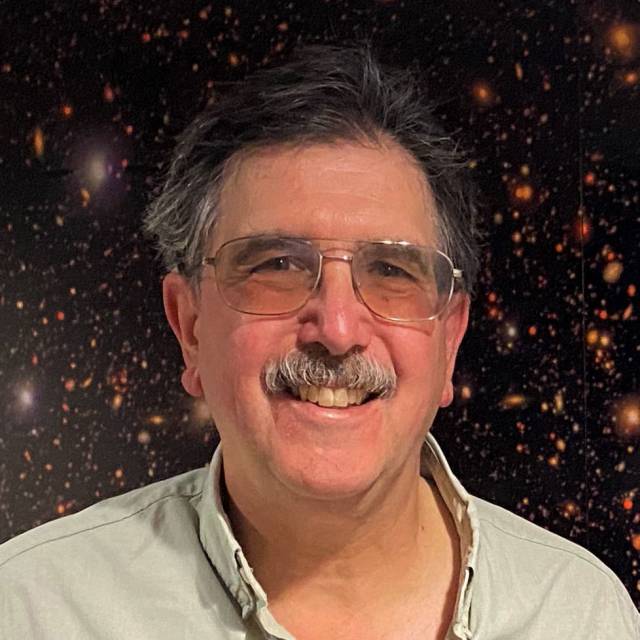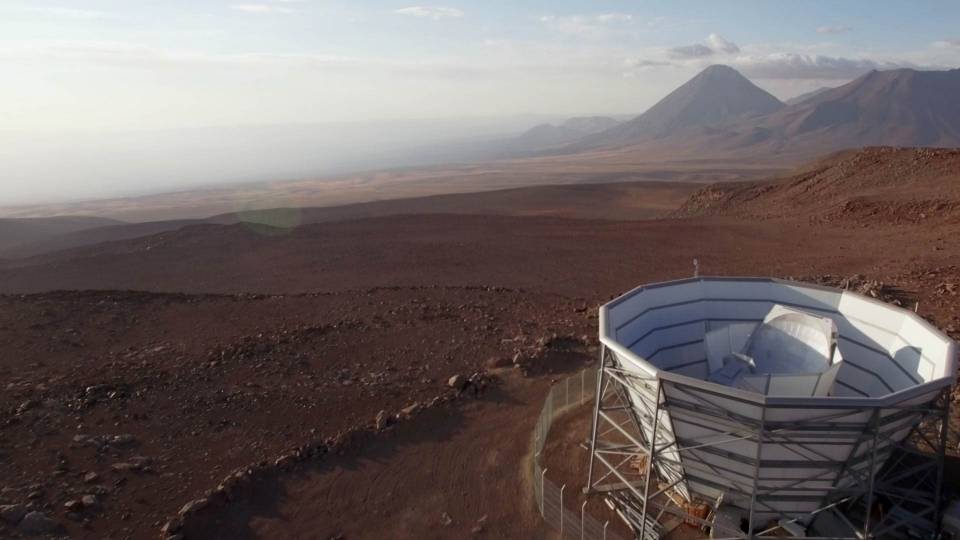How do you measure dark matter, which by definition emits no light? Watch how it impacts things that you can see — specifically, how light from distant galaxies bends around it, as predicted by Einstein’s General Theory of Relativity.

Roohi Dalal
“This distortion is a really, really small effect; the shape of a single galaxy is distorted by an imperceptible amount. But when we make that measurement for 25 million galaxies, we’re able to measure the distortion with quite high precision,” said Roohi Dalal, a graduate student in astrophysics at Princeton who is the first author on one of a series of five papers being submitted today to Physical Review D that describe a new wrinkle to the question.
The papers come from an international team led by astronomers from Princeton University and the astronomical communities of Japan and Taiwan, using observations from one of the most powerful astronomical cameras in the world, the Hyper Suprime-Cam (HSC) on the Subaru telescope. (Subaru is operated by the National Astronomical Observatory of Japan; its name is the Japanese word for the cluster of stars we call the Pleiades.)
To jump to the punchline: The team has measured a value for the “clumpiness” of the universe’s dark matter — known to cosmologists as “S8” — of 0.776. That aligns with values that other gravitational lensing surveys have found in looking at the relatively recent universe, but it does not match the value of 0.82 derived from the Cosmic Microwave Background, which dates back to the universe’s origins.

Michael Strauss
The gap between these two values is small, but it doesn’t appear to be accidental. The other possibilities are that there’s some as-yet unrecognized mistake in one of these two measurements — or the standard cosmological model is incomplete in some interesting way.
“We’re still being fairly cautious here,” said Michael Strauss, chair of Princeton’s Department of Astrophysical Sciences and one of the leaders of the HSC team. “We’re not saying that we’ve just discovered that modern cosmology is all wrong. The statistics show that there’s only a one in 20 chance that it’s just due to chance, which is compelling but not completely definitive. But as we in the astronomy community come to the same conclusion over multiple experiments, as we keep on doing these measurements, perhaps we’re finding that it’s real.”
Hiding and uncovering the data
The idea the standard cosmological model needs a tweak can be an enticing one.
“We are human beings, and we do have preferences. That’s why we do what we call a ‘blinded’ analysis,” Strauss said. “Scientists have become self-aware enough to know that we will bias ourselves, no matter how careful we are, unless we carry out our analysis without allowing ourselves to know the results until the end.”
On February 16, the international team gathered together on Zoom for the ceremonial unblinding. “We unveiled the data and ran our plots. Immediately we saw it was great,” said Strauss. Dalal and her roommate popped a bottle of champagne that night.
The standard cosmological model
The standard model of cosmology is defined by surprisingly few values: the expansion rate of the universe; a measure of how clumpy the dark matter is (S8); the relative contributions of the constituents of the universe (5% ordinary matter, 25% dark matter, 70% dark energy, plus a tiny contribution from photons); the overall density of the universe; and a technical quantity describing how the clumpiness of the universe on large scales relates to that on small scales.
Dalal and her colleagues came to their conclusion about S8 through several different approaches.
Dalal’s paper focuses on a so-called Fourier-space analysis; a parallel real-space analysis was led by Xiangchong Li of Carnegie Mellon University, working in close collaboration with Rachel Mandelbaum, a Princeton undergraduate and graduate alumna. The other three papers detail a so-called 3x2-point analysis; that work was led by Sunao Sugiyama of the University of Tokyo, Hironao Miyatake (a former Princeton postdoctoral fellow) of Nagoya University, and Surhud More of the Inter-University Centre for Astronomy and Astrophysics in Pune, India.
Doing the different analyses “was sort of a sanity check,” said Dalal. She and Li worked closely to coordinate their real-space and Fourier-space work, using blinded data. Any discrepancies between those “would tell us less about astrophysics and more about how we might have screwed up,” she said.
“We didn’t know until the unblinding that two results were bang-on identical,” she said. “It felt miraculous.”
This story has been abridged from the full version, available on the Department of Astrophysical Sciences website.
Hyper Suprime-Cam Year 3 Results: Cosmology from cosmic shear power spectra, by Roohi Dalal, Xiangchong Li, Andrina Nicola, Joe Zuntz, Michael A. Strauss, Sunao Sugiyama, Tianqing Zhang, Markus M. Rau, Rachel Mandelbaum, Masahiro Takada, Surhud More, Hironao Miyatake, Arun Kannawadi, Masato Shirasaki, Takanori Taniguchi, Ryuichi Takahashi, Ken Osato, Takashi Hamana, Masamune Oguri, Atsushi J. Nishizawa, Andrés A. Plazas Malagón, Tomomi Sunayama, David Alonso, Anže Slosar, and Paul A. Price.
Li, X. et al. 2023, Hyper Suprime-Cam Year 3 Results: Cosmology from cosmic shear two-point correlation functions
Miyatake, H. et al. 2023, Hyper Suprime-Cam Year 3 Results: Cosmology from galaxy clustering and weak lensing with HSC and SDSS using the emulator based halo model
More, S. et al. 2023, Hyper Suprime-Cam Year 3 Results: Measurements of the clustering of SDSS-BOSS galaxies, galaxy-galaxy lensing and cosmic shear
Sugiyama, S. et al. 2023, Hyper Suprime-Cam Year 3 Results: Cosmology from galaxy clustering and weak lensing with HSC and SDSS using the minimal bias model
This research was supported by the National Science Foundation Graduate Research Fellowship Program (DGE-2039656); the National Astronomical Observatory of Japan; the Kavli Institute for the Physics and Mathematics of the Universe; the University of Tokyo; the High Energy Accelerator Research Organization (KEK); the Academia Sinica Institute for Astronomy and Astrophysics in Taiwan; Princeton University; the FIRST program from the Japanese Cabinet Office; the Ministry of Education, Culture, Sports, Science and Technology (MEXT); the Japan Society for the Promotion of Science; the Japan Science and Technology Agency; the Toray Science Foundation; and the Vera C. Rubin Observatory.




